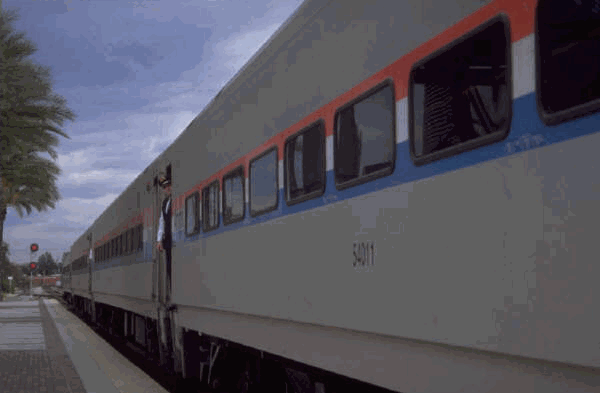DMC/INS/05/01
Great North Eastern Railway (GNER) v Avon Insurance Plc
English Court of Appeal: Judgment delivered by Longmore LJ:[2001] Civ 780; May 2001
INSURANCE POLICY: APPLICABLE CONTRACTUAL TERMS: BUSINESS INTERRUPTION
INSURANCE: EXCLUSION CLAUSES: WIDE OR NARROW VERSION: CHANGE INTRODUCED ON
RENEWAL: NOT DRAWN TO UNDERWRITERS' ATTENTION: EXCEPTION: COVER FOR BREAKDOWN:
REPUGNANCY
Where a broker negotiating the ‘renewal’ of a current insurance policy merely sent the underwriter a "presentation" document, without drawing the underwriter's attention specifically to a proposal in that document to change the terms of that policy, that was wholly insufficient - in the context of negotiations that were limited to commercial factors impacting on the premium – to bring that material change to the underwriter’s attention. In such circumstances, the underwriter was not bound by the proposed change in terms
DMC Classification: Confirmed
FactsGNER operate the Inter City East Coast rail service between London King’s Cross and Edinburgh. On 16 June 1998, one of the GNER trains was derailed in Bedfordshire. The derailment was caused by the break up of one of the wheels on the engine. This was the result of fracture propagation initiated by faulty engineering of one of the holes drilled in the wheel. For the purposes of the litigation, the break up of the wheel was agreed to be due to the fault of the manufacturers. As a result of the accident, GNER rail services were immediately interrupted when power was switched off for two hours, followed by reduced services until June 22 1998, in order to carry out safety checks on the GNER fleet of similar engines. As a result, GNER incurred a loss of revenue and additional expense amounting to about £4.5 million.
Since March 1996 GNER had placed material damage and business interruption insurance with Avon, under a combined form of policy initially broked by Fenchurch Insurance Brokers. The policy wording for this cover had been agreed in August/September 1996. The terms included an exclusion for damage or consequential loss caused by ‘faulty or defective design, materials or workmanship, inherent vice, latent defect, gradual deterioration, wear and tear or frost.’
In February 1997, GNER changed their brokers to Jardine Insurance Services,
who negotiated renewal of the cover on the basis of the existing Fenchurch
wording, but on the understanding that Jardine's could come back to Avon if they
wanted alterations. No policy wording was issued for this renewal. In February
1998, Jardine's began preparations for the renewal of the cover. They produced
as a market presentation a document entitled ‘Request for Property Insurance
Quotations’. In this presentation, the exclusion clause referred to above
appeared in a narrower form, as follows:
‘No cover is provided for damage or consequential loss caused by or
consisting of: faulty or defective workmanship, operational error or omission on
the part of GNER or any employees, other than drivers and guards.’

At a key meeting between Jardine’s representative and the Avon underwriter on 20 February 1998, the judge at first instance held that the presentation, of which the Avon underwriter had a copy but had not read, was not referred to and, in particular, the Jardine version of the exclusion clause was not drawn to the attention of the underwriter. The content of the meeting was limited to ‘commercial matters relevant to the calculation of the premium’. Renewal terms were agreed on March 5 in a fax sent by Jardine's confirming ‘renewal of the policy’ but, as in the previous year, no policy wording was ever issued.
When the accident arose, GNER claimed under the policy. Avon rejected the claim in reliance on the version of the exclusion clause set out in the wording agreed with Fenchurch.
The ArgumentsGNER argued that the terms of the policy in force at the time of the accident were those contained in the Jardine presentation of February 1998, which had been duly submitted to Avon, in time for the Avon underwriter to read and consider them. When the Avon underwriter agreed to underwrite the insurance without raising objection to them, he should be deemed to have accepted them, regardless whether or not he had actually read the presentation. Under the Jardine wording of the exclusion clause, GNER’s claim was a valid one. Avon’s case was that, prior to the claim arising, the Jardine version of the exclusion clause had never been discussed with Avon, let alone agreed by them. Avon were therefore entitled to reject the claim in reliance on the Fenchurch version of the exclusion clause. GNER countered this by claiming that the Fenchurch wording rendered breakdown cover for GNER’s engines illusory. As it had always been the intention of the parties that breakdown be covered, the exception could never have been intended to apply to engine breakdown and should therefore be ignored as ‘repugnant’.
The Judgment
The court found that the ‘renewal’ of the insurance referred to in the
Jardine fax of 5 March 1998 related to a renewal of the terms of the previous
policy year, which ‘must on any view be the Fenchurch wording’. The court
stressed the trial judge’s findings that the Jardine presentation had not been
referred to at the meeting of 20 February and that the Jardine version of the
exclusion clause had not figured in any of the negotiations that followed. The
court approved the reliance of the trial
judge on evidence of the ‘method of
doing business’ given and agreed at the trial. This was to the effect that ‘if
a broker were asking an insurer to renew cover which that insurer had given for
the immediately previous year, [it was] incumbent on the broker to draw to the
attention of the underwriter any specific change he was seeking and to obtain an
acknowledgement from the underwriter that he was willing to accept those changes
on renewal.’ The judge was also entitled, in the context of deciding whether a
suggested term was or was not in a contract, to rely on the subsequent conduct
of the parties – in this case the fact that, after the accident, the Jardine
broker who had negotiated the 1998 renewal provided his colleagues in the claims
department with the Fenchurch, rather than the Jardine, terms.

On the question of repugnancy, the court held that it was not ‘permissible to look between the lines of the written contract [which in this case was a combined Material Damage/Breakdown and Business Interruption policy] to extract a part of the cover [the breakdown cover in this instance] and then to argue that a particular exception will deprive that part of the cover of any effective meaning. The repugnancy doctrine (even at its most extreme) only entitles a court to disregard an exception clause if the contract as a whole would otherwise be virtually reduced to a declaration of intent’. In this respect the court relied on the decision in the House of Lords case of Tor Line A.B v. Alltrans Group of Canada, the ‘TFL Prosperity’ [1984] 1 WLR 48.
The court continued that even if it were possible to isolate the breakdown cover, it was not ‘impossible to give the contract with the exception clause a sensible meaning’. The wider form of the exclusion clause, namely the Fenchurch version, did not exclude liability for operational error or omission, nor liability arising from external perils, such as malicious damage by third parties. Moreover, the court held that it was ‘impossible to say that the parties cannot have intended there to be no exception applicable to breakdown cover, which is what [GNER’s} argument comes down to….. To delete the exclusion clause altogether in relation to breakdown insurance would be to re-make for the parties a contract they did not make for themselves’ – which the court was not entitled to do.
The court therefore held that GNER's claim failed.